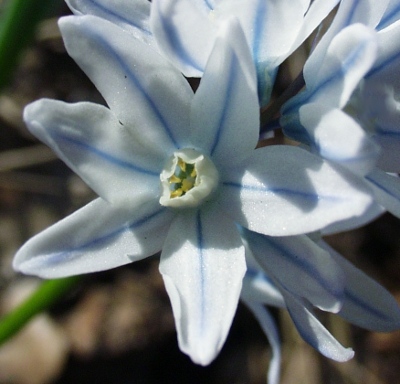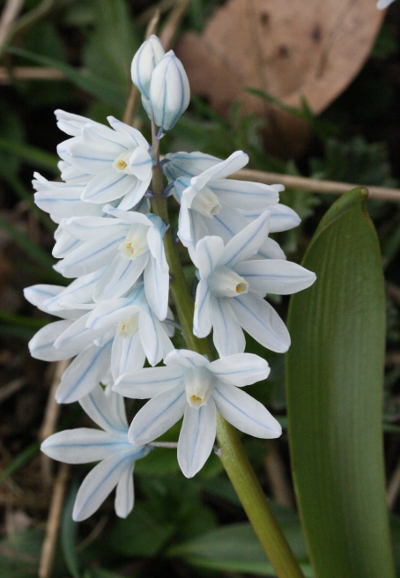Puschkinia |

Flower of the striped squill (Puschkinia scilloides)

Inflorescence of the striped squill (Puschkinia scilloides)
Adams named the genus after his expedition leader Apollos Apollosovi Mussin-Puschkin (1760–1805), under whose guidance he discovered the plants in the Caucasus in 1800.
In 1808 Carl Ludwig von Willdenow renamed the genus in honor of the first describer as Adamsia. The reason was, that it is not permitted in science to name two different genera after a single person, and there would already exists the genus Mussinia (Asteraceae), which he had already established themselves. The rule and the genus Mussinia there is no longer, and according to the current rules of nomenclature only that name is valid, which the first describer has given.
The originally in Middle East and Central Asia occurring genus contains only 2 species. In Central Europe they are found as feral ornamentals. The perennial plants are herbaceous and possess underground bulbs which having a thickness from 2 to about 5 cm in diameter. There are 1–3, but usually 2 basal, upright leaves that are parallel-veined, sessile, entire and 5–24 mm wide. They are about as long as the stalk.
The leafless stalks rarely bears only a single stalked flower, usually it possesses 3–11 additional lateral flowers. The axis of the resulting racemose inflorescence is called flower scape. The pedicels have very short bracts. The 6 more or less similar looking tepals are pale blue, white or greenish and with a darker median strip. At the base they are fused bell-shaped or tubular, sometimes up over half addition.
In flower center is a 2–3 mm high cone, consisting of the ovary and of the surrounding petaloid broadened stamens (corolla appendage) and of the spliced blossoms base. The superior ovary bears a simple style.
After pollination by bees or bumblebees, a dry fruit capsule developed, which opens with 3 valves and releases spherical seeds, that possess a so-called elaiosome, which serves to spread by ants. Vegetative the genus Puschkina multiply by forming daughter bulbs.
| Floral formula: |
| * [P3+3 A3+3] G(3) superior |
Meaning of the species names
- libanotica: lat. libanoticus = from Lebanon
- scilloides: lat. scilloides = squill- (Scilla-) like
Interesting notes
Puschkinia peshmenii has greenish flowers and is found in Turkey and Iran. It was only discovered in 2007.
Glory-of-the-snow species (formerly Chionodoxa, now belonging to Scilla) share the central cone with Puschkinia.
Puschkinia scilloides var. libanotica ‘Alba‘ is a pure white cultivar.